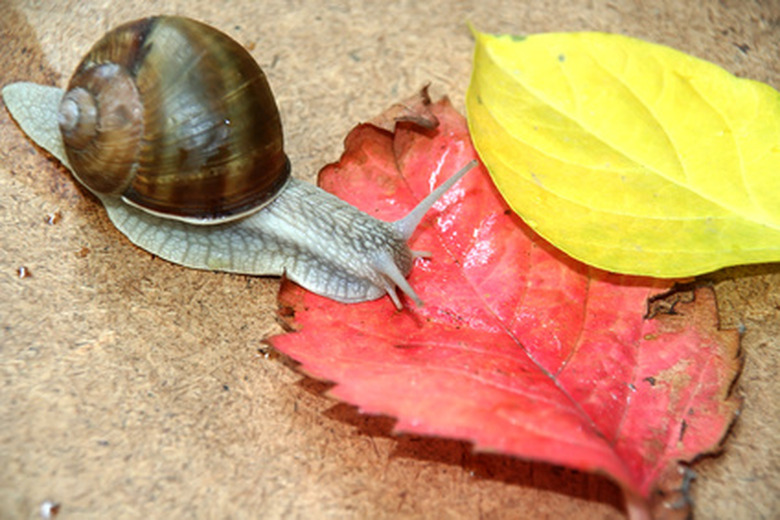Garden Pest Identification In Northern California
Many areas of Northern California have climates that are conducive to growing fruit trees, ornamentals, vegetables, native plants and even some tropical plants. However, a number of insects and other pests can present a challenge to those who want a lovely yard. From snails to opossums, you can control pests humanely or naturally and avoid poisons in your environment.
Types of Common Garden Pests
Mollusks that damage plants are either snails or slugs, both of which are found in almost every Northern California garden. Destructive chewing insects include aphids, scale, several types of beetles and tomato hornworms. You might need to protect your plants against a few kinds of small mammals as well: opossums, raccoons and rats often live in residential areas and can cause extensive damage to ripening fruit and other plants.
Snails
The brown garden snail was introduced in the mid-1800s from its home in France as a food source. This snail has a crunchy brown shell, which can grow to over 1 inch across. The creature that lives inside is slimy; its head has two antennae when it is extended from the shell and it travels on a muscular foot that comprises the entire underside of its body.
- Many areas of Northern California have climates that are conducive to growing fruit trees, ornamentals, vegetables, native plants and even some tropical plants.
- Mollusks that damage plants are either snails or slugs, both of which are found in almost every Northern California garden.
Identifying Chewing Insects
In order to effectively control destructive insects, it's wise to learn which one is presenting a problem in your garden. Several species of aphid exist in Northern California: all are small, yellow to green, red to brown, or black. They suck fluids from a plant and can kill it. Watch for curled or yellow leaves and a sticky substance on your plant. If you see ants, they are an indication that aphids exist because the ants feed from the aphids' sticky excretion. Scale insects are small armored insects that look like a knob and stay in the same spot when they are mature.
Bothersome Beetles
Several beetle species can cause widespread damage to plants, with more than 200 species of bark beetles existing in California, according to the University of California at Davis. They commonly attack pine trees and other conifers as well as other broadleaf trees. The shothole borer can adversely affect fruit trees, English laurel, fruit trees, hawthorn and other woody plants. U.C. Davis recommends pruning and destroying all tree parts that appear to be affected. The squash bug resembles a beetle and can damage cucumbers, melons, pumpkins and other squash. It's dark colored and over 1/2 inch long, with orange and brown stripes.
- In order to effectively control destructive insects, it's wise to learn which one is presenting a problem in your garden.
- Several species of aphid exist in Northern California: all are small, yellow to green, red to brown, or black.
Tomato Hornworm
Warmer inland areas of Northern California are often the home of the tomato, or tobacco, hornworm. This large larva is bright green with a "horn" protruding from its hindquarters. You will see large holes in developing tomatoes and small black cylindrical pellets, which are the hornworm's excrement, below the hornworm. You can hand pick it, but avoid pesticides on your plants because they can kill the hornworm's natural predators.
